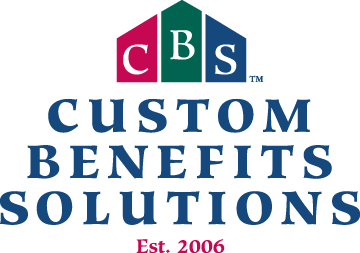The Rap on Wraps | North Carolina Benefit Advisors
There’s a good chance you use a wrap document to help satisfy your Employee Retirement Income Security Act (ERISA) summary plan description (SPD) obligations. Yet if you look for a definition of wrap document in ERISA statutes or regulations, you will not find one. The wrap is not a defined term or required document; it is simply a format. So why do you need a wrap document? Here are three (of many) reasons why a wrap document is a solid choice.
Reason 1
Your insurance carrier materials are not enough in most cases.
A common misconception is that carrier materials or benefit description booklets meet all ERISA SPD requirements. They rarely do; in fact, they usually fall short.
For example, the SPD must define or explain eligibility for benefits. A carrier’s materials may indicate that a benefit is available for all full-time employees, but not define what constitutes “full-time.” An SPD that does not completely communicate eligibility is deficient, may confuse employees, and could result in costly litigation for your company.
Therefore, to address gaps like these, it’s advisable to use a wrap document to “wrap around’ the existing carrier documents and fill in any required ERISA provisions the carrier documents are missing.
Reason 2
You are an applicable large employer (ALE) and use the lookback measurement method.
ALEs who use the lookback measurement method to determine eligibility for medical benefits must meet a complex set of rules for determining whether and how certain employees are eligible for healthcare coverage under the Affordable Care Act (ACA). The rules are complex and daunting for employers. Even more daunting, however, is explaining these eligibility rules to employees.
Carriers are not required to communicate this information, and very likely will not. Therefore, it is up to you to ensure the information is communicated. While your specific lookback measurement method is not required to be explained in an SPD – and some employers choose to put it in an employment policy or handbook — the SPD is a logical place to include this information because it also communicates your other benefits eligibility requirements.
Reason 3
A wrap reduces your reporting obligations.
You may use a wrap document to combine multiple insurance policies into a single document, which results in one ERISA plan for all combined benefits. This simplifies and reduces reporting requirements for employers who are subject to Form 5500 filing requirements.
Most employers with 100 or more health and welfare benefit plan participants as of the first day of the plan year, as well as certain employers with fewer than 100 participants, are required to file a Form 5500 annually. (Participants include covered employees and former employees who elect COBRA, but spouses and dependents are not counted.) Some plans, such as governmental plans or certain church plans, are exempt from filing a Form 5500.
The wrap document may be a time saver if you have multiple health and welfare benefit plans subject to Form 5500 filing requirements. For example, if you have a vision, dental, and medical plan that each meet the “100 or more participant” threshold, then you would be required to file a Form 5500 for each plan. However, if the plans are all wrapped together into a single document, then they are considered one ERISA plan and you would only have to file one Form 5500.
Do it Right
While there are many other reasons an employer should consider investing in a wrap document, not all wrap documents are made equal. Work with a reputable vendor and/or competent counsel to ensure your wrap document meets all compliance requirements.
Originally published by www.thinkhr.com

